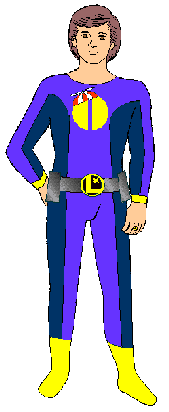In SF we're used to the idea of divergent timelines: two or more universes that share the same past, but have different futures. To borrow Doc Brown's graph from the Back to the Future movies, divergent timelines look like this:
Somewhat related, and more familiar, is the idea of parallel timelines: two alternate universes that have different past, present, and futures. The graph looks like this:
The most familiar Legion example is the Legions of Three Worlds. More fundamentally, this is the concept behind the whole DC Multiverse.
The two concepts overlap; if you follow parallel timelines far enough back into the past, you may find that they diverged from a common history.
Now here's what's happening in the Legion that is very seldom seen: convergent timelines. Here, two parallel timelines come together to the same future. Here's the graph:
And here's how the concept relates to the Legion:
The Original Legion and the Retro Legion have different histories. As a minor example, in the Original Legion Mon-El visited Krypton, met Superboy, went into the Phantom Zone almost right away, and stayed there until the Leigon let him out. In the Retro Legion, he didn't visit Krypton, met Clark Kent, went into the Phantom Zone...then was released by Superman and had a 21st century career (including seeded the U.P. worlds) before going back into the Phantom Zone until the Legion released him.
If I understand DC's philosophy, though, the Retro Legion and the Original Legion share the same 31st century "present." The assumption seems to be this: If Levitz had continued writing Legion after the Magic Wars, then the group would have wound up in the same place it is today*. In Legion terms, the timelines look like this:
This idea of convergent timelines isn't brand-new in science fiction...in Doctor Who there has been talk of collapsing timelines together, and also of "fixed points in time" which may represent the same idea. In written sf, Poul Anderson and Fritz Leiber have played around with similar concepts. But convergent timelines are still largely unexplored territory.
Anyway, for me this insight provides a satisfactory answer to the question of whether the current Legion is an alternate version or the real thing. That answer? It used to be an alternate version, but now it's the real thing.
Thoughts?
----------
*No, I don't actually believe that if Levitz had continued the Legion, it would be in the same place today. In fact, I would vigorously argue that it would be very different. But I'm willing to accept this as an assumption for the sake of argument.
Look at it this way: The Original Legion could have ended up with today's Retro Legion. The Earth-247 Legion and the Earth-Prime Legion couldn't have ended up here. That's good enough for me.
----------












1 comment:
Works for me. I think. :)
Post a Comment